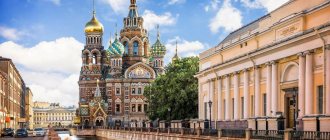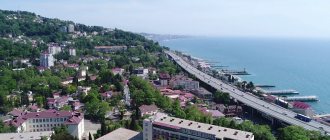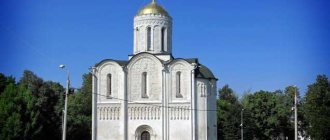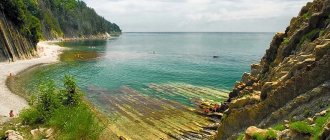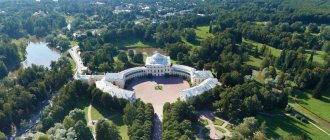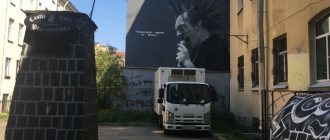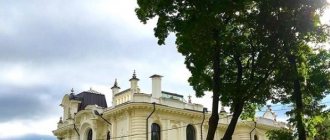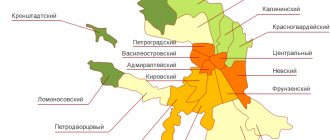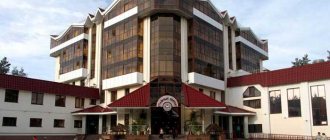Strelna is one of the most interesting suburbs of St. Petersburg. Its name comes from the name of the Swedish manor (estate) that was once located there - Strelna Hof. And she got this name from the Strelka River. It is noteworthy that initially Peter I wanted to locate Petrodvorets there. Therefore, a few years after the founding of St. Petersburg, the construction of a royal estate, the construction of a pond, a greenhouse, a church, and a garden began here.
In Peter I's garden grew his favorite tree - a large old linden tree. There is a legend that in its crown the sovereign built himself a gazebo from which he admired the sea view. The linden tree, of course, did not survive to this day and was replaced by another, which is still alive today.
Potatoes were first grown in Strelna after they were brought from Europe. And in the palace cellars there were many wines from Hungary. Already today, during one of the international meetings, V.V. Putin was presented with a collection of expensive wines. So the cellar of the Strelninsky Palace is still used for its intended purpose.
For an overview of all the suburbs of St. Petersburg and places in the Leningrad region that are interesting to tourists, follow the link. We would like to especially mention the guides to Peterhof and Lomonosov, a trip to which can be combined with a visit to Strelna - they are very close.
You can get to Strelna by train from the Baltic station (directions Kalishche, Oranienbaum) or by minibuses T-103, T-224, T-300, T-404, T-424, T-850 from the Baltic station, Avtovo metro stations "or "Leninsky Prospekt". Near Avtovo you can take tram number 36. By car you can drive along the Ring Road, then turn right onto Krasnoselskoye Shosse or along Stachek Avenue, Petergofskoye and St. Petersburgskoye Shosse.
Trinity-Sergius Hermitage
Address: St. Petersburg highway, 15.
You can start your walk by visiting chapels, cathedrals and churches with ancient architecture. They are located on the territory of a monastery founded in the 18th century. Previously, these lands belonged to the sister of Queen Anna Ioanovna, but in 1734 she transferred them to her confessor. Over the course of two centuries, the desert was rebuilt and acquired its usual shape. It was here that ship chaplains were trained for the Russian navy. In 1919, the monastery was reorganized into a children's labor commune. Since the 1930s, a paramilitary security school was organized on this site, and in 1960, a police school. Only in 1993 were the deserts restored.
Konstantinovsky Palace
Address: Berezovaya Alley, 3.
This is an architectural monument of the 18th century, which is a park and palace ensemble; since 2003 it was renamed the “Palace of Congresses”. The first owner of the palace was Peter I, but he did not wait for its construction to be completed. The greatest architects of that time worked on the complex in the Baroque style: Leblon, Rastrelli, Michetti, all of them completed the complex at different times. According to the owner's plans, the ensemble was supposed to surpass the majesty of the French Versailles. However, Peter’s dreams were not destined to come true here either. The area in which the palace is located was in no way suitable for the construction of round-the-clock fountains, as the famous hydraulic engineer Minnich proved to the sovereign.
Until 1917, the complex was owned by the royal family, after which a school-colony, a sanatorium, and naval courses were organized there. During the Great Patriotic War, the complex was destroyed to the ground. In the middle of the last century it was restored, and the Arctic School was opened here. In 2000, the complex was on the balance sheet of the Administration of the President of the Russian Federation; today, major political summits and meetings are held there.
Before you include a visit to the palace in your itinerary, it is worth booking a tour. Admission only as part of a guided tour with a special pass. It is not possible to explore the attraction on your own.
Sculptural group "The Tsar's Walk"
The bronze composition was installed on the territory of Konstantinovsky Park next to the pier in 2003 in honor of the 300th anniversary of St. Petersburg. The group includes figures of Tsar Peter I, his wife Catherine, a court jester, two hunting greyhounds and a throne. All of them stand on a pedestal, on the sides of which there are cannons.
The monument is very ambiguous; when looking at it, one gets the impression that the emperor and his wife are depicted in some kind of comical version: frozen facial features, too solemn poses, and the appearance of the sovereign seems completely asymmetrical due to his small head. But nevertheless, the group fell in love with tourists and became one of the symbols of Strelna.
Address: pos. Strelna, Berezovaya Alley, 3.
Travel Palace
Address: st. Hospital Hill, 2.
This is the earliest building in the village of Strelna. A rather modest wooden structure located on a hill. It served as a temporary refuge for the emperor on his way to Kronstadt or his country residence in Strelna. The palace had modest decoration and, nevertheless, in its frontal area there were fountains rising to a height of 10 meters. According to legend, it was in this place that Peter first planted potatoes brought from Holland. Later, when Peter no longer needed the palace, he gave it to his daughter Elizabeth. The palace was rebuilt twice: during the revolution, a maternity hospital was located here, and in 1950, a nursery was opened. The Palace of Peter I today is the main museum of Strelna; permanent exhibitions and valuable exhibits are located here.
Excursions to Strelna
You can take an excursion to Strelna directly from St. Petersburg, from where numerous group excursions are organized. Often such excursions include a bus transfer to the park and then a walking tour of the palace and park complex.
Strelna, Alexandria and Oranienbaum: visiting the imperial family is a group excursion lasting the whole day (about 10 hours). The excursion route includes visits to such imperial residences as Strelna, Alexandria and Oranienbaum. The latter is given the most time. Inspection takes place only from the outside. The price of the excursion includes bus transfer and guided tours. Additionally, tickets to the parks of Alexandria and Oranienbaum are paid - 100 rubles each;
An excursion to Strelna and the Konstantinovsky Palace is a group bus and walking tour lasting 4.5-5 hours. Tickets to museums, guide services and transportation are included in the price of the excursion. The tour starts from Nevsky Prospekt, 35. During the tour of the Konstantinovsky Palace you will see several exhibitions, open historical interiors and works of art previously considered lost.
Andrey Korchagin/Konstantinovsky Palace in Strelna
Lviv Palace
Address: St. Petersburg highway, 69.
This building is of a later period; the years of its construction date back to the 19th century. The architect of the project was A.K. Kolman, the first owner was the illegitimate son of Konstantin Pavlovich P.K. Alexandrov. The estate, thanks to this surname, was named Aleksandrovka. Before the revolution, the palace belonged to Prince A.D. Lvov. During the Second World War, the estate was located in occupied territory and was looted and destroyed. The park area has also been lost and is now partially built up by the private sector. Between 2013 and 2015, the palace was restored; now the building houses the administration, the Strelna municipal council, and a music school.
Map of attractions of the city of Strelna
See also the sights of other cities of the Leningrad region and the suburbs of St. Petersburg:
- Shlisselburg, Sestroretsk, Vasilyevsky Island, Vyritsa,
- Gatchina, Tikhvin, Tsarskoye Selo, Sosnovy Bor,
- Lodeynoye Pole, Ivangorod,
- Krasnoye Selo, Novaya Ladoga, Tosno,
- Kingisepp, Luga, Primorsk, Vsevolozhsk and Vyborg.
Strelna is a small city with a big soul. Despite its relationship with St. Petersburg, it is not a copy of it, but has its own life and history. Sometimes it’s worth deviating from the well-worn tourist paths and turning away from Tsar Grad towards a quiet province to enjoy its secluded beauty.
Bridge-dam with a spillway on the Strelka River
A special place of Peter the Great's time, its construction supposedly dates back to 1710. As you know, Peter did not give up hopes of setting up a Russian Versailles in Strelna and tried to raise the water level. For this purpose, with the help of dams located right up to the bay, the river bed was created. Arrows 400 meters long. On the shore there is a nursery of ornamental trees and shrubs. The river bank itself is made of granite slabs. The dam is located next to the Traveling Palace of Peter I; you can see it on the road from the parking lot to the palace.
Passage across the dam bridge is prohibited and blocked. The structure is over 300 years old, so it’s better to just enjoy the beautiful view and the waterfall that flows right under the bridge.
The nature of Strelna, which is worth seeing
The natural attractions of Strelna are varied. Here you can find both elaborate parks and untouched, wild spaces.
Strelninsky coast
- Coordinates on the map: 59.861111, 30.088889.
The protected area was founded in 1992 and covers an area along the coast of the Gulf of Finland with an area of 40 hectares and a width of 400 meters.
The purpose of creating the reserve was to preserve the natural landscape of the Gulf of Finland and protect the habitat of local and migratory birds, including endangered species.
Nature here lives its own life without interference from people. Thickets of moisture-loving plants grow along the shallow water, and in some places there is a unique black alder swamp. A little further, on solid soil, grow alder and bird cherry groves, where rare birds build their nests.
The territory is strictly protected and any activity that could damage the ecology of the reserve is prohibited within its boundaries.
Orlovsky Pond
- GPS coordinates: 59.849541, 30.042223.
Orlovsky Pond is located on the territory of the former Orlov estate, now called Orlovsky Park. The pond appeared in 1710, long before Alexei Orlov established his estate on its shore. In Peter's times it was called Zavodsky, due to the large number of brick factories in its vicinity.
Initially, it was planned to be used to feed the city fountains, but they were never built, and the reservoir remained. Orlovsky Pond is famous for its picturesqueness. Its banks are covered with greenery, and lilies and water lilies bloom on the surface of the water. Very often you can see motley ducks and swans here.
Orlovsky Park
- Coordinates: 59.850965, 30.039187.
This area once belonged to Count Alexei Grigorievich Orlov. It was he who laid out a rich park around the ancient pond and built a luxurious mansion on its shore. The estate consisted of several residential, utility and decorative buildings of the same neo-Gothic style.
All buildings were destroyed by revolution and war. Some of them disappeared without a trace, while others remained in ruins. In the early 2000s, the park was restored. The alleys were replanted, the pond was cleaned, bridges and gazebos were rebuilt. Among the thick wood there are the remains of ancient buildings: a stone tower, a grotto, wells, pedestals on which marble statues previously stood.
Bridge-dam on Strelka
- Address: St. Petersburg highway, 61X.
Before moving to Peterhof, Peter I was going to build a Russian Versailles in Strelna and equip it with many fountains. To do this, he threw all his strength into raising the water in the city and built dams along the entire bed of the Strelka River.
Only one water barrier has survived to this day. It is a stone bridge with a rapid drainage. On both sides of the dam there are blooming trees and bushes, and the shore is lined with granite slabs.
Those wishing to cross the riverbed on the bridge will have to be disappointed - the structure is more than three hundred years old, and passage onto it is strictly prohibited for the safety of citizens. But no one will forbid you to admire the beautiful view of the river and forest.
Embankment "Morskaya Strelna"
- Address: Naberezhnaya street.
The embankment is one of the best places for outdoor walks. There are pedestrian and bicycle paths here, comfortable benches, flower beds and street lights are installed, making walks possible in the dark. The embankment offers a beautiful view of the vast Gulf of Finland, and nearby there is a marina for small ships and yachts.
Port channel
- Address: Pristanskaya st., 25M.
The port canal is the artificially created channel of the Strelka River. Its length is 400 meters; granite curbs, preserved from the times of Peter the Great, stretch along the banks.
Not long ago, there were plans to build a pier at the mouth of the canal, but a study of the river revealed a large number of shallow water areas. Then an arched pedestrian bridge was built here and willows were planted, turning the Port Canal into a wonderful place for outdoor recreation.
Equestrian club "Centaur"
- Address: st. Svobody, 48.
"Centaur" is the oldest private equestrian club in Strelna. It was founded in 1982 by a big fan of horse racing, Adolf Petrovich Manjola.
Currently, the Centaur is home to a dozen horses. In addition to the training program, there are services for visitors: walks around the arena with an instructor (for beginners) and dressage in the field (for more experienced riders). In addition to horses, there lives a goat named Inga, who you can pet and feed with crackers, and also watch as she is walked on a leash.
The club hosts mass events in honor of the New Year and Maslenitsa, as well as themed photo sessions. The establishment has a locker room, a bathroom and a rest room.
Prince Orlov's dacha
The estate house was built in the neo-Gothic style, the project architect was P. S. Sadovnikov. The estate was a single ensemble of a beautiful palace and park with the Orlovsky pond, as well as various outbuildings. Construction of the manor house was completed in 1834. During the Second World War it was looted and completely destroyed. Today, guests can go to the park, admire the tuff bridge, the ruins of the stable yard and the greenhouse complex at ul. Frontovaya, 2.
Mikhailovsky Park
The estate belonged to the princely family of Mikhailovich, its construction also dates back to the second half of the 19th century. Today, the territory of the former Mikhailovka Park belongs to the state nature reserve. It is noteworthy that at the beginning of the 18th century Mikhailovka was divided into plots owned by the most famous people of that time. The Palace of Prince Mikhail Nikolaevich was also located here. The park is located north of the St. Petersburg Highway between the river. Shinkarkoy and st. Krylova.
The most interesting places in Strelna
The most famous sights of Strelna are known throughout Russia. They often appear on postcards and appear in films. It's time to meet them "in the flesh"!
Konstantinovsky Palace
- Address: Konstantinovsky Park, lit.
When conceiving the Constantine Palace, the ambitious Peter I wanted it to eclipse the French Versailles with its luxury and splendor. But the construction was soon abandoned, and the summer residence was moved to Peterhof. At the end of the 18th century, the unfinished palace ensemble had a new owner - the son of the autocrat, Constantine.
The Grand Duke started a massive redevelopment and invited the Italian architect Nicolo Michetti. The result of the work was a majestic building in the Baroque style. A rectangular pond was built in front of the front square, and a huge park was laid out behind the palace, covering an area of 200 hectares.
Konstantinovsky Park is a real work of art. Everything here is done perfectly: green lawns repeat geometric shapes and are separated from each other by perfectly even alleys, forming symmetrical patterns. Blooming flower beds add colorful touches to the overall picture, while sculptures, stone vases and graceful fountains complete the composition.
Palace of Prince Mikhail Nikolaevich
- Address: St. Petersburg highway, 109B.
The land for the construction of this palace was acquired in the spring of 1834. Its owner was to be the son of Nicholas I, the then two-year-old Grand Duke Mikhail. Construction began in 1858 and lasted almost 5 years. The new complex consisted of two palaces (Small and Large), connected by galleries. Leafy alleys and cypress trees were planted around the attraction.
For Prince Mikhail, the palace was a country dacha, where he loved to relax with his family. After his death in 1909, the estate passed to his heirs, and then the revolution broke out, and the princes had to leave their home.
In the first half of the 20th century, the building was used as an orphanage. The educational program included gardening: children planted trees and looked after flower beds and lawns. Thanks to their efforts, the manor park avoided destruction. In 2015, it was decided to locate the campus of St. Petersburg University in the former palace. The building has been partially restored and is now bustling with student life.
Sculpture "The Tsar's Walk"
- Address: Portovaya street.
The main sculptural composition of the city is located on the shore of the Gulf of Finland. It depicts Peter the Great leading his wife, Catherine I, by the arm. The royal couple is accompanied by a dwarf court jester and a hunting greyhound. All the figures that make up the monumental landmark are cast in bronze and represent people and animals in lifelike size.
Sculptor Mikhail Shemyakin reliably depicted the external features of Peter: his powerful height and disproportionate physique. The Emperor and Empress are dressed in ceremonial costumes.
The sculptures are placed on a stone platform with a staircase and a shaped fence behind. Decorative cannons are installed on the sides of the pedestals. The composition opened in 2003 and received two names at once - “The Tsar’s Walk” and “Monument to Peter I and Catherine I”. Mikhail Shemyakin noted that this is the first incarnation of Catherine I in metal. Before this, not a single monument had been erected in honor of the empress.
Don't miss: The best attractions of the Leningrad region
Tower Ruin
This is another architectural monument located in the vicinity of Orlov’s dacha. It was also made according to the design of the architect Sadovnikov and was intended for children’s games. The tower was restored in 2016, and today it is a cultural heritage site. The building is located in the neo-Gothic style on the territory of Oryol Park. It is located on a hill near an artificially created pond of irregular shape. A decorative grotto was made at the foot of the hill.
Stables in Orlovsky Park
The Oryol stables are of particular interest to architecture lovers. Even though they are in a dilapidated state, their striking appearance immediately attracts attention. Pavilions were erected according to the design of P. S. Sadovnikov from red brick in a pseudo-Gothic style. Considering the status of the owner of the estate, A.F. Orlov, commander of the Strelna cavalry regiment, it is not surprising that the buildings turned out to be so unusual and memorable. The stables are located on the shore of the pond in Orlovsky Park, access to them is free.
Gatekeeper's House
The building belongs to the territory of the Orlovskaya dacha. The house is located separately, at the address St. Petersburg Highway, 78. The house was built in 1890, its architect was I. I. Charlemagne. The Gatekeeper's House is considered the main entrance to the territory of Oryol Park. The architecture is truly unique; there are a variety of elements of the Gothic style:
- lancet windows and arches;
- heraldic shields;
- cast iron grates;
- tuff facing.
The house is well preserved; from 1962 to 1985 it housed a children's library.
How to get to Strelna from St. Petersburg
You need to get to Strelna by the same route as to Peterhof, since it is located in front of Peterhof. You can get there by car along the Peterhof Highway, by bus, tram and train. Buses run from the metro stations “Avtovo”, “Prospekt Veteranov”, “Baltiyskaya” and “Leninsky Prospekt”.
- from “Avtovo” - bus No. 200 No. 201, No. 210 and minibuses K-103, K-224, K-300, K-424, K-424a, K-401A;
- from “Prospekt Veteranov” - minibuses K-329, K-343, K-650a;
- from “Baltiyskaya” - minibus K-404;
- from Leninsky Prospekt - minibus K-420.
I usually get in this direction from Avtovo, it’s most convenient. As soon as you get out of the metro, you need to immediately turn right and go through the underground passage to the other side of the road, there is a bus stop from where minibuses go to Peterhof. There is usually a queue for minibuses, since most go to Peterhof.
We don’t need to get to Peterhof, so it’s better to go by bus, it, of course, goes with stops and it will take a little longer than by minibus, but it’s much more comfortable, since there are fewer people, and the bus is larger than a minibus. Travel by minibus costs 60 rubles, and by bus from 36 to 55 rubles, depending on the pass. You need to get off at the stop “Ulitsa Glinke”. Getting to Strelna takes about half an hour, depending on the traffic situation. It's faster by minibus, of course.
Tram number 36 also goes there. The tram stop is a little further than the bus stop; you need to cross to the other side of the road and go through the houses to the parallel Kronstadt street. The tram runs, often in the same way as buses, but the ride on it is much longer, it is completely leisurely, so it will take you about 50 minutes to get there. The fare costs from 36 to 55 rubles, depending on the pass. On the tram you need to get off at the “Kikenka” stop.
Electric trains run from the Baltic station every half hour; go to Strelna station; a ticket costs 47 rubles. From the station you will walk along Frontovaya Street past Orlovsky Park to St. Petersburg Highway. The Palace of Peter I will be nearby, it is located opposite the Orlovsky Pond, but it will take longer to get to the Konstantinovsky Palace; for this you need to walk along the highway towards St. Petersburg for three stops. Therefore, the most convenient form of transport, besides a car, is a minibus or bus.
Chapel of St. Nicholas the Wonderworker
Address: st. Pristanskaya, 23 A.
An excellent example of the neo-Russian architectural style was created by D. D. Zaitsev. The year of completion of construction is not known for certain; it presumably happened in 1910 or 1913. The chapel is notable for the fact that at the moment it is the only surviving building made of monolithic reinforced concrete. Since 1932, the chapel ceased operation and was used as a warehouse. The opening and illumination of the chapel took place only in 1995.
Natural monument Strelninsky coast
The natural monument is located near the village of Strelna and occupies more than 40 hectares. Its territory also extends to the coastal shallows and beaches of the southern coast of the Gulf of Finland. The Strelninsky coast is a striking example of coastal black alder swamps, which practically disappeared during development in the eastern part of the bay. Trees and shrubs provide habitat for about 80 species of migratory birds. The coastal area serves as a stopover for waterfowl during seasonal migrations. In addition, rare species of birds and plants can be seen here.

